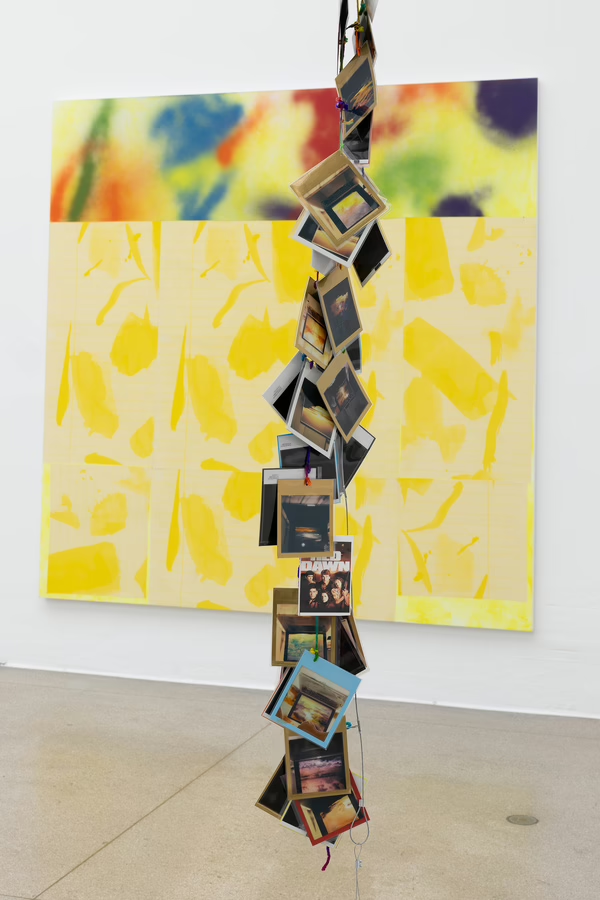Rainbows in faecal manner and crumbly clay in the Vienna Secession

By Caroline Schluge
Exhibitions by Rochelle Feinstein, Ali Cherri and Beatriz Santiago Muñoz score with convincing discussions of contemporary themes
George Clooney is said to have once described himself and his Ocean’s Eleven colleague Brad Pitt as “trauma buddies”. A slopper Sager, whose humor the New Yorker Rochelle Feinstein has taken for herself: In the main room of the Secession hang three large-format screen prints, which she also named. Time in the picture is the name of her show, which she actually called The Today Show in the original. The works shown provide an explanation for this: Her series Trauma Buddies, like almost all works, was only created this year, her themes are highly topical.
Two Maps, for example, a reference to Jasper John’s 1955 flag, is an allusion to the election year and the dilapidated two-party system of the USA. Washed rainbow colors in their pictures – Feinstein calls them “Shit Rainbow” – criticize the almost shameless commercialization of the queer solidarity movement. She uses cheap cloths ordered on Amazon or scans plastic bags from the supermarket and makes them the painting ground. Your work does not just hang on the wall, recycled wooden trolleys become presentation elements and room dividers.
Between painting and sculpture
Feinstein’s paintings are also technically of high interest: for 23 years she was a professor of painting and printing technology at the Yale School of Art, she moves at the interface of printing and painting, but also of sculpture and collage. Her gesture is spontaneous and dynamic, she scatters cut prints on the screen in apparent disorder, many pictures remain untrapped.
In the basement, the mood changes quickly, rarely do you experience a Secession show in such a classic museum manner as with Ali Cherri: The native Lebanese deals with the construction of history in Vienna. How are narratives created in museums? How and according to what criteria do you select objects, who makes decisions? At the entrance, wooden replicas are six empty pedestals of statues behind glass, including that of the controversial Lueger monument in Vienna and that of the statue of Hafez al-Assad, the father of the Syrian president, which was accidentally overthrown a few days ago.
Of men, gods and dirt
Opposite this is a sublime sphinx. Unlike the cold bronze ruler statues, it is formed of clay, probably the oldest and at the same time “most primitive” of all production materials. This is characteristic of Cherri’s work: the fragile, crumbly clay counters the imposing charisma of his sculptures. The visual highlight of the show is the video installation Of Men and Gods and Mud, for which he was awarded the Silver Lion at the Venice Biennale 2022.
Three films can also be seen in the Graphic Cabinet. In Elogio al disparate, in German “praise of nonsense”, Beatriz Santiago Muñoz plays a clever game with sound and visual language. Following Dadaist traditions and the Caribbean “jitanjáforas”, meaningless words, she invents new expressions and blurs the boundaries between reality and fiction. (Caroline Schluge, 10.12.2024)
Read the full article online on DERSTANDARD.